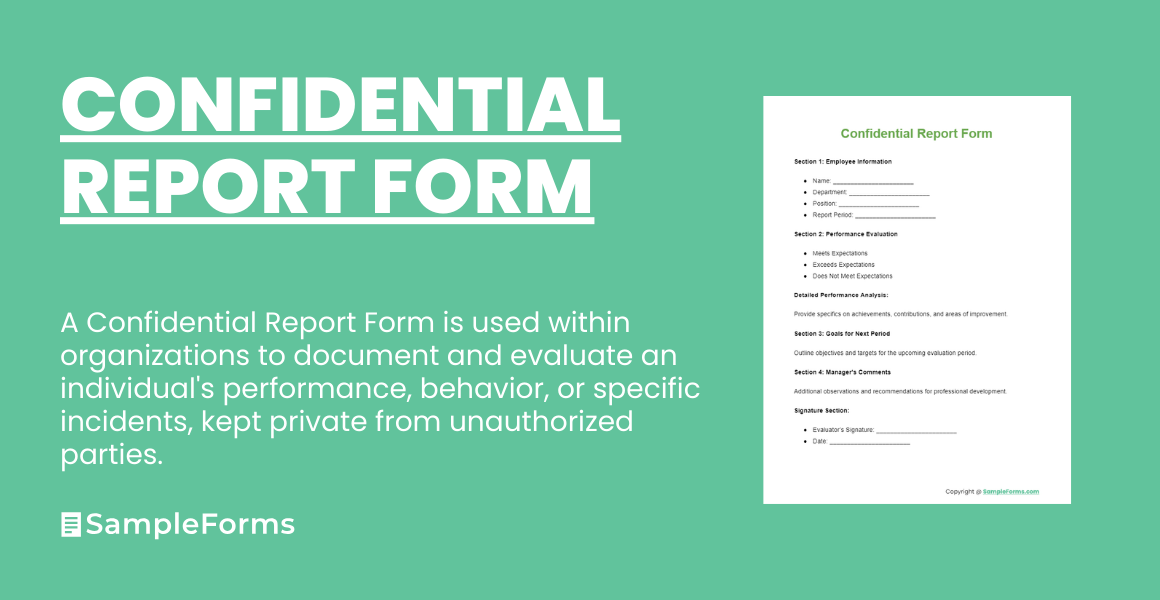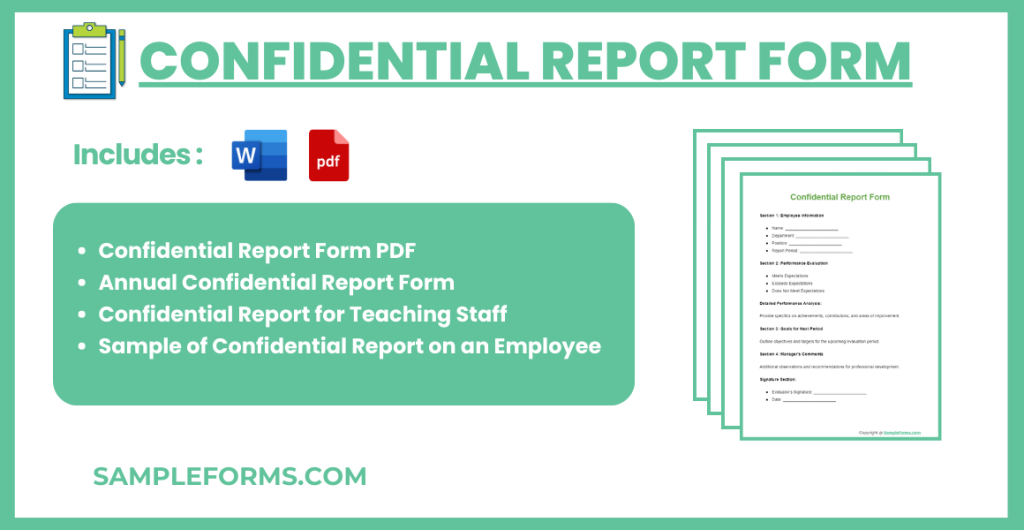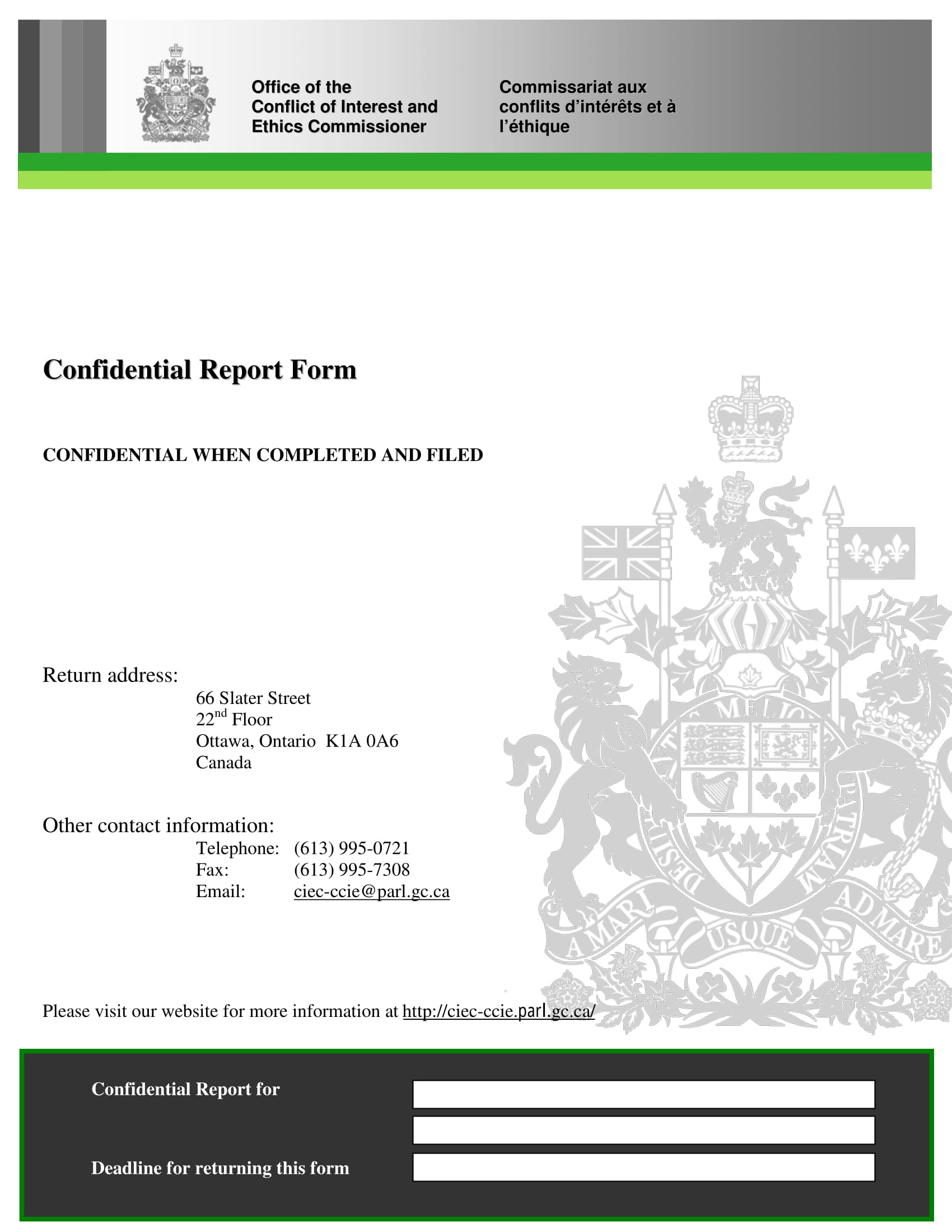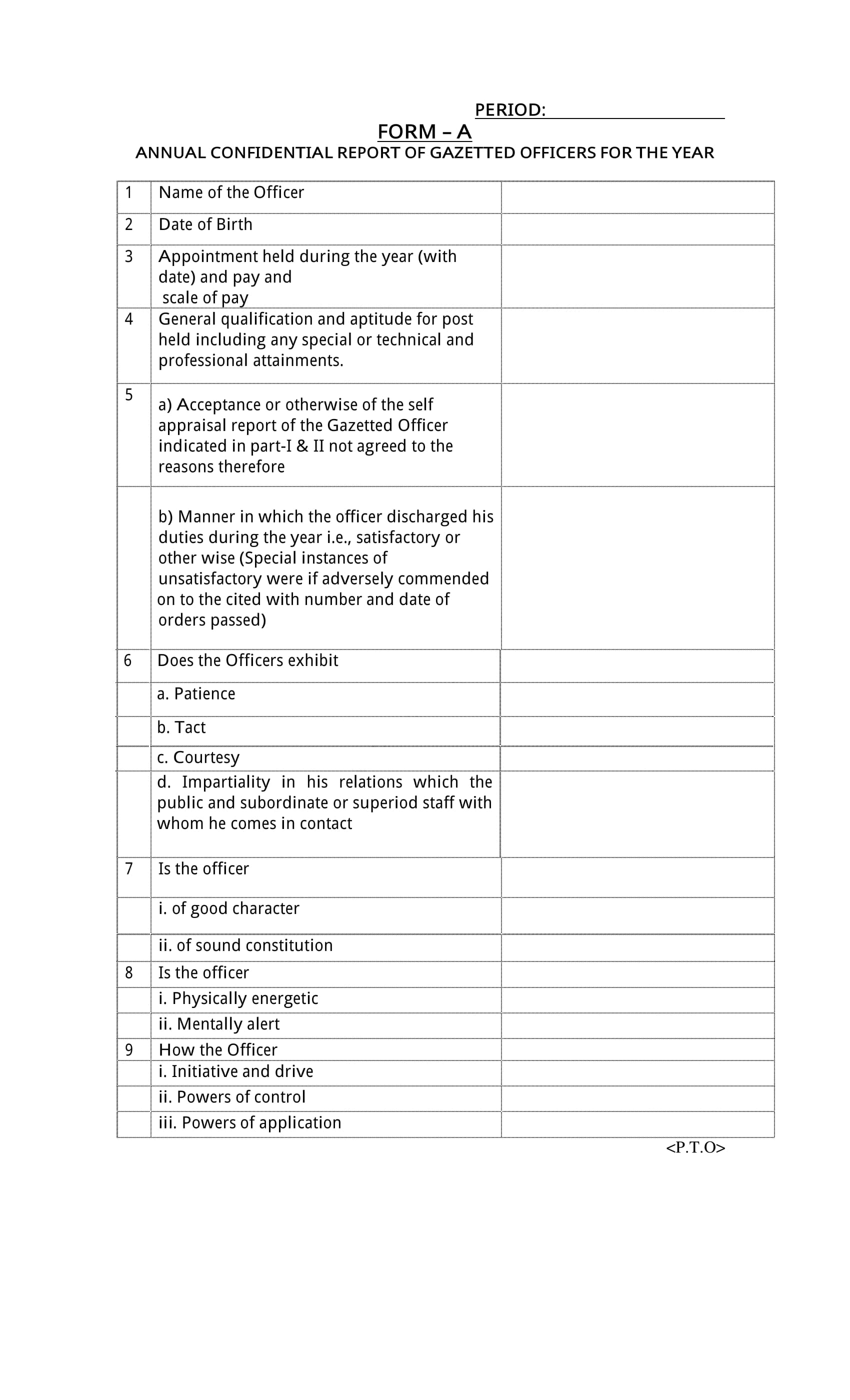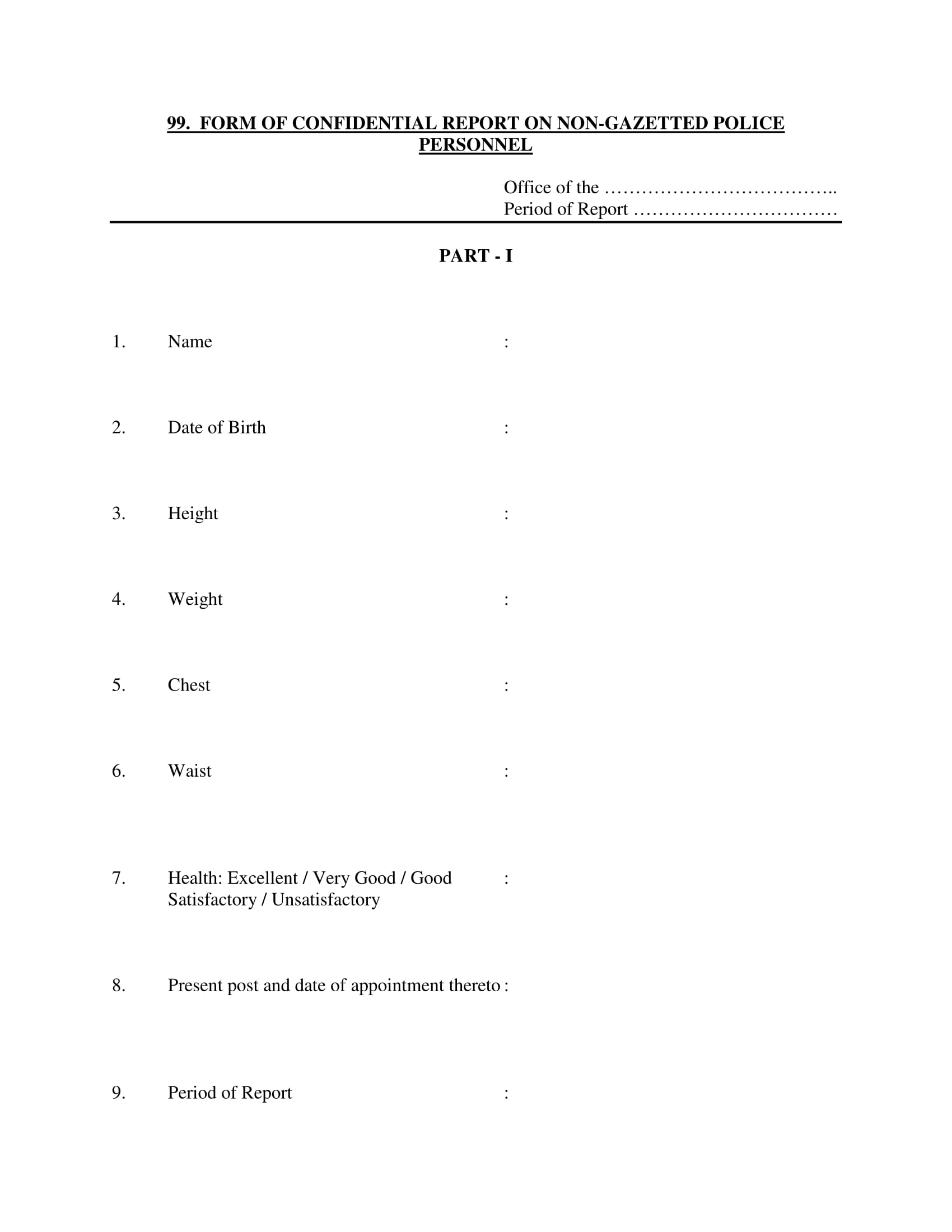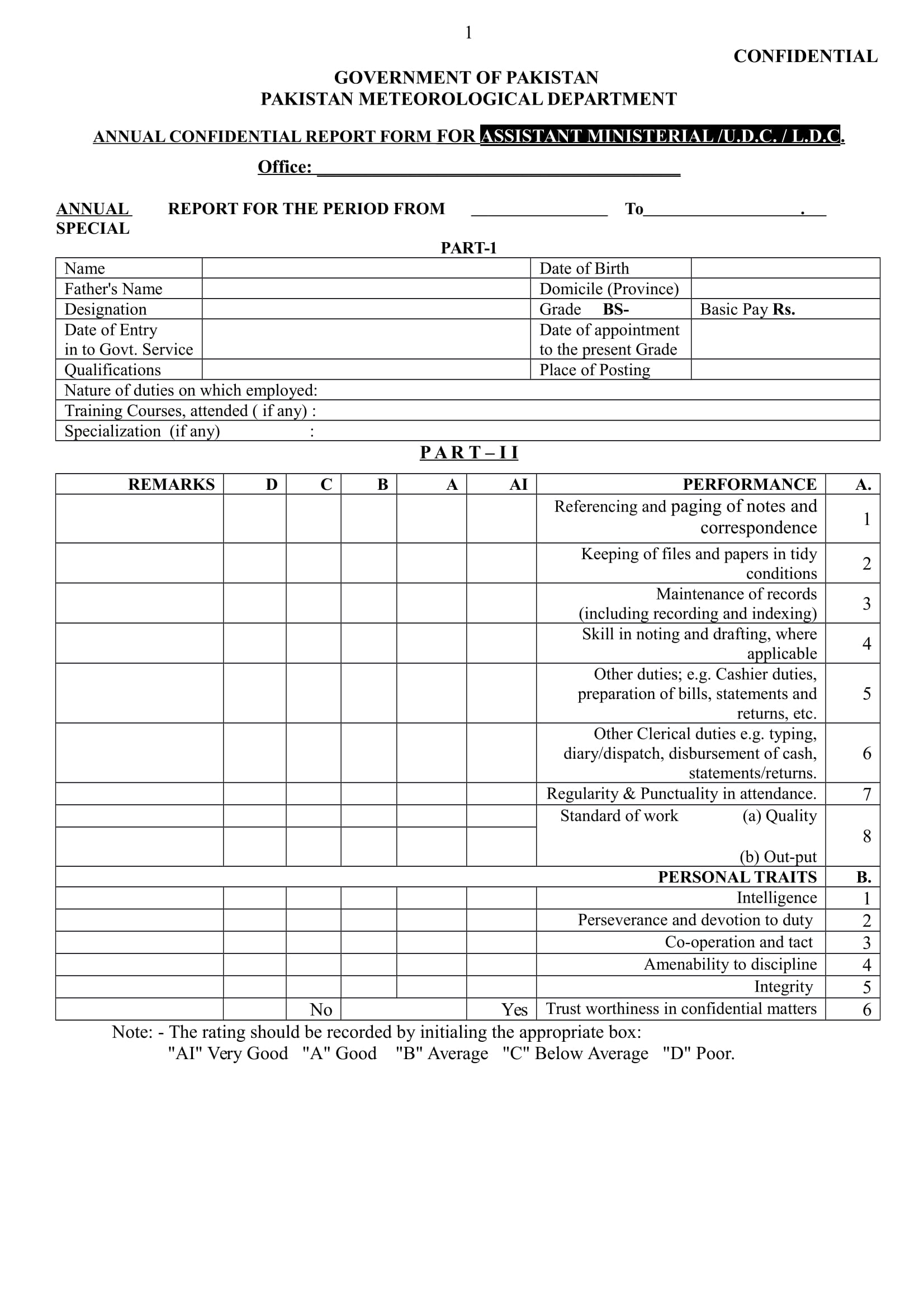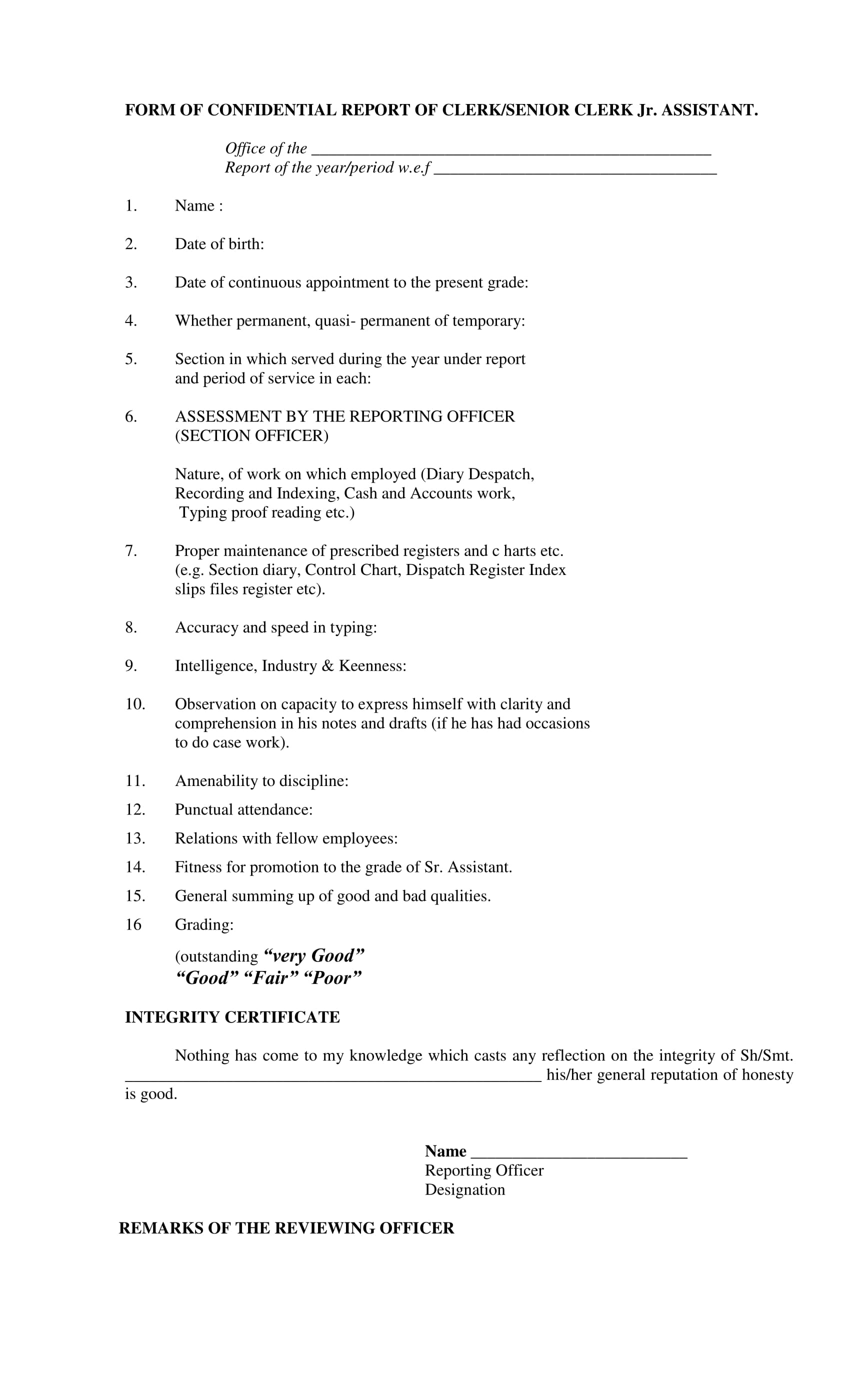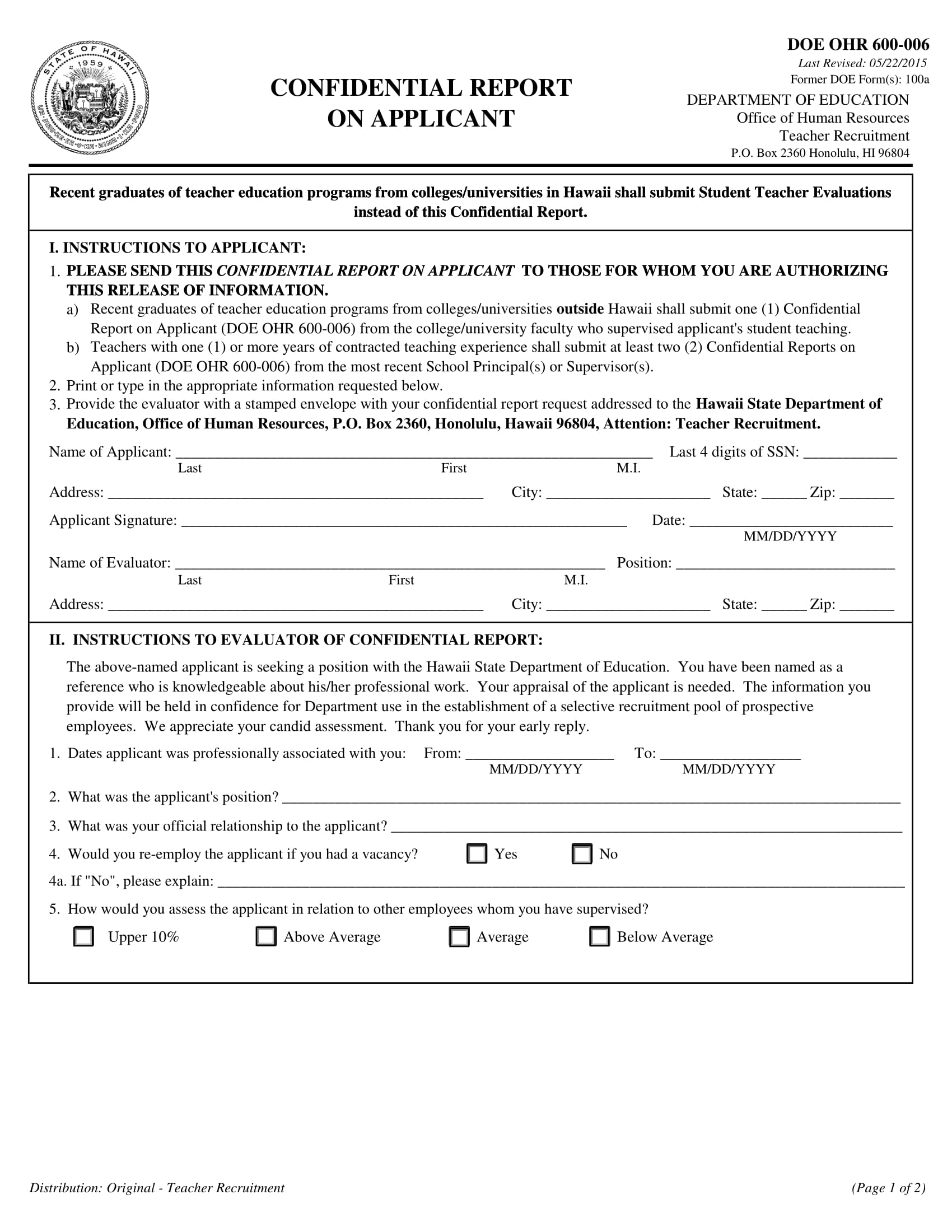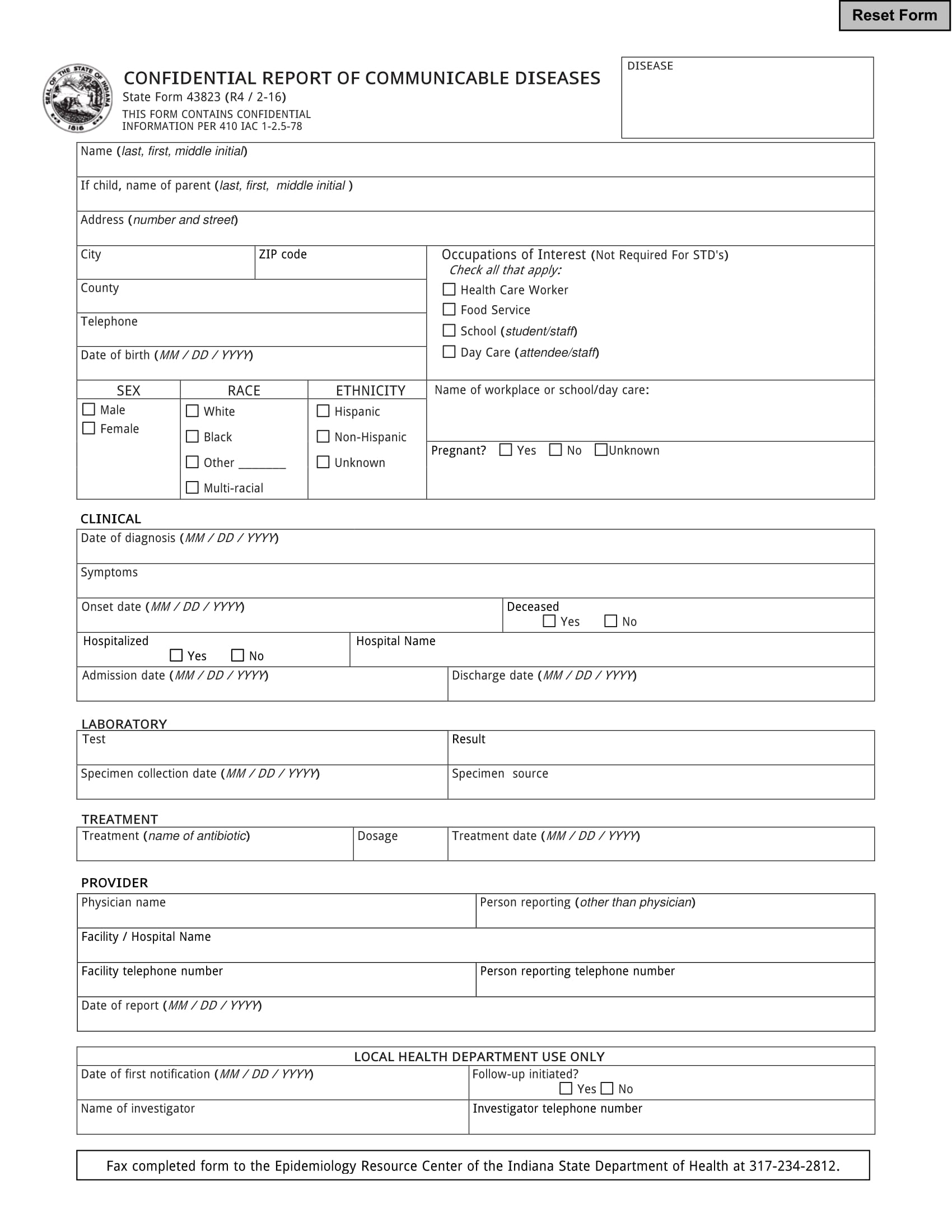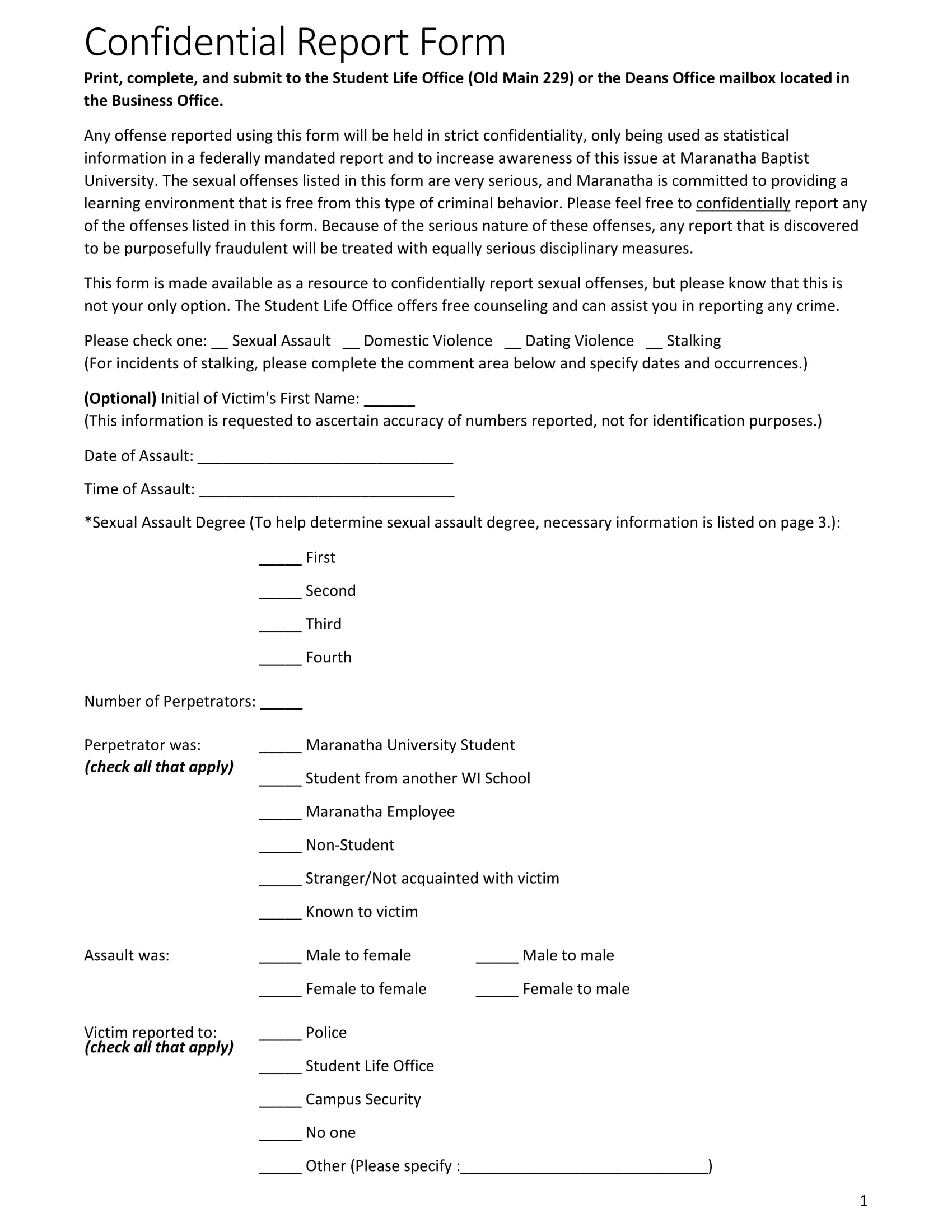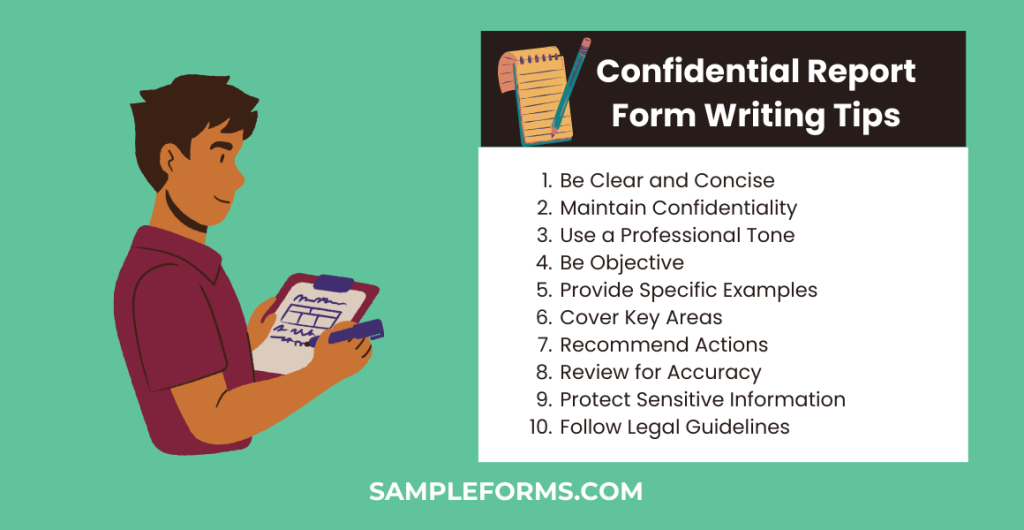Dive into the essential world of Confidential Report Forms with this detailed guide. From understanding its importance to mastering its creation, we cover every angle to ensure your sensitive information remains protected. This guide not only walks you through the steps of drafting effective Report Form but also enriches your knowledge with practical examples. Incorporating keywords such as Daily Report Form and Confidential Evaluation Form it provides all you need to know about securing your data with confidence.
Download Confidential Report Form bundle
What is Confidential Report Form? – Meaning
A Confidential Report Form is a document designed to safeguard sensitive information shared within it. It’s primarily used in environments where privacy and confidentiality are paramount, ensuring that the details contained are only accessible to authorized individuals. This form serves as a critical tool in maintaining the integrity and confidentiality of data, ranging from employee evaluations to sensitive business insights, embodying the essence of a Confidential Evaluation Form.
Confidential Report Format
Header: Confidential Report
Introduction: Purpose of the report and confidentiality statement.
Section 1: Personal and Professional Information
- Name
- Department/Team
- Position/Role
Section 2: Evaluation Criteria
Subsections for different areas of assessment (e.g., Performance, Leadership, Teamwork).
Section 3: Overall Performance Rating
- Rating Scale from 1 to 5
Section 4: Comments and Recommendations
Space for detailed comments on performance and future development suggestions.
Section 5: Action Plan
Outline steps for addressing any areas of concern or improvement.
Signature Section:
- Evaluator’s Signature
- Date
Confidential Report Form PDF
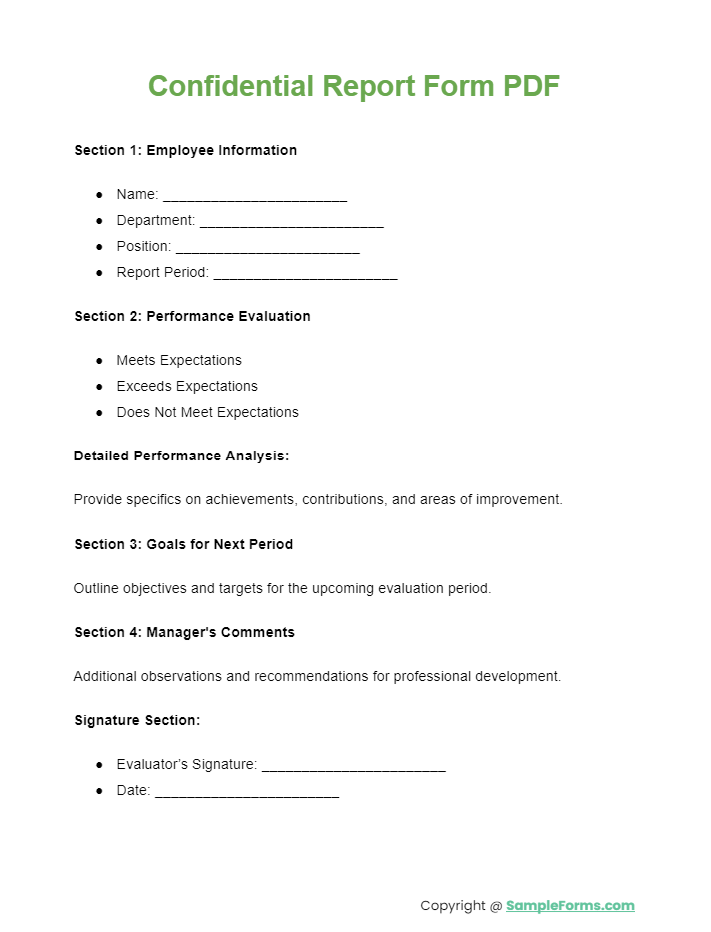
Discover how to create a Confidential Report Form PDF to ensure secure, digital documentation of sensitive information, incorporating Student Report Form elements for daily data capture and confidentiality.
Annual Confidential Report Form
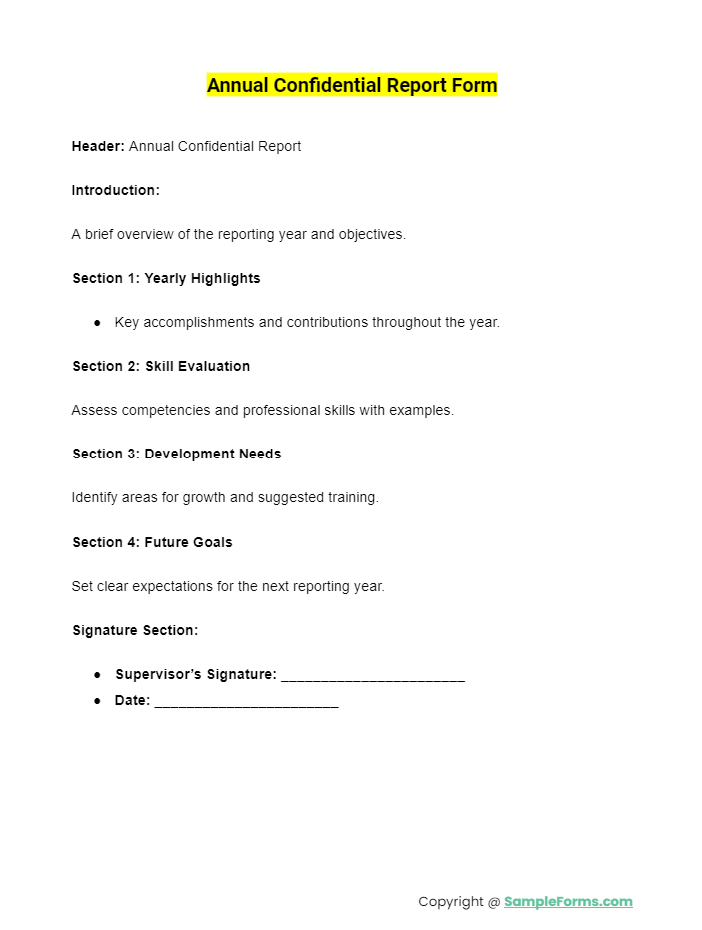
The Annual Confidential Report Form plays a crucial role in evaluating yearly performance, integrating Weekly Report Form aspects to assess employees discreetly and effectively.
Confidential Report for Teaching Staff
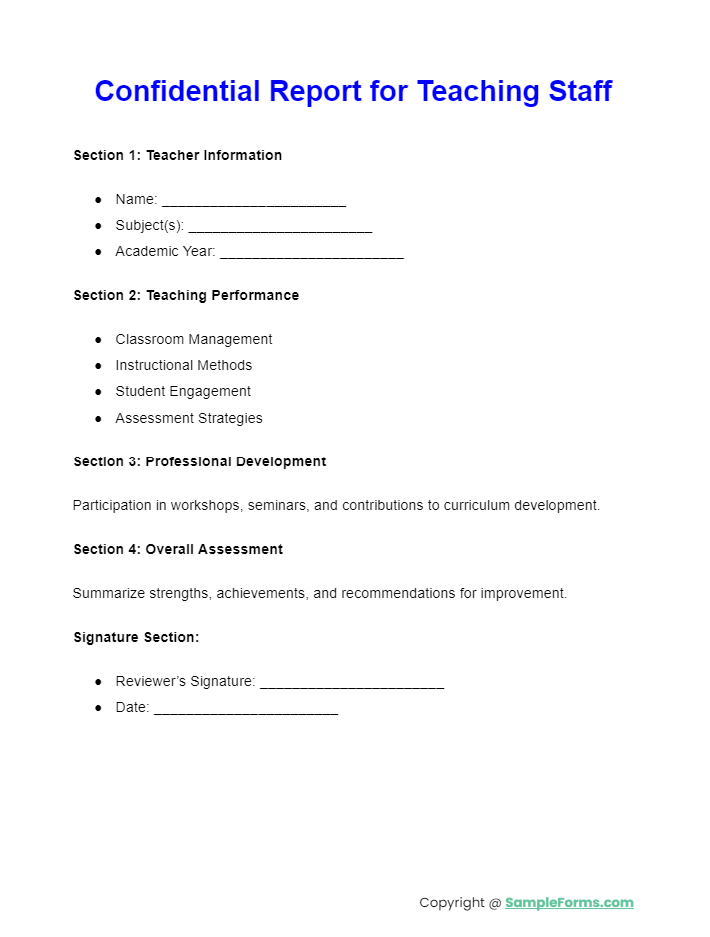
This guide on Confidential Report for Teaching Staff emphasizes the importance of confidential evaluations, aligning with Confidentiality Agreement Form principles to safeguard personal and professional assessments.
Sample of Confidential Report on an Employee
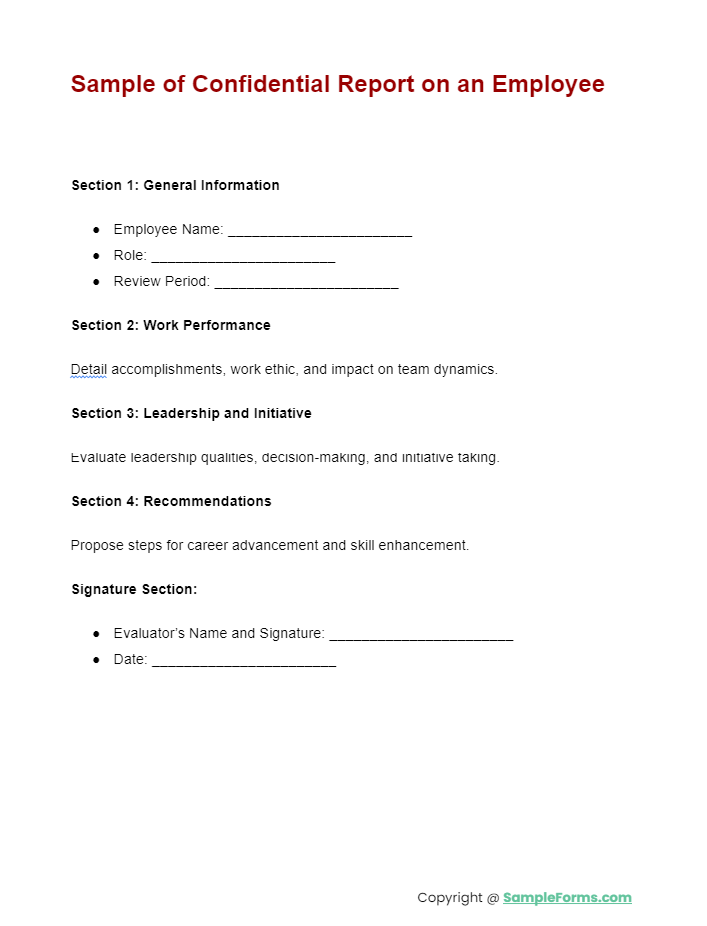
More Confidential Report Form Samples
Confidential Report Form Sample
Annual Confidential Report Form
Confidential Report Form for Personnel
Annual Confidential Report Form for Assistant
Sample Form of Confidential Report
Confidential Report on Applicant
Confidential Report for Communicable Disease
Sample Confidential Report Form
Confidential Report Form Writing Tips
- Be Clear and Concise: Use straightforward language to ensure readability.
- Maintain Confidentiality: Only share the form with authorized personnel.
- Use a Professional Tone: Keep the language formal and respectful.
- Be Objective: Focus on facts and avoid subjective judgments.
- Provide Specific Examples: Support evaluations with clear examples.
- Cover Key Areas: Address performance, conduct, and any areas of concern.
- Recommend Actions: Suggest improvements or next steps if necessary.
- Review for Accuracy: Double-check all information for correctness.
- Protect Sensitive Information: Ensure personal data is securely handled.
- Follow Legal Guidelines: Adhere to relevant privacy and employment laws.
How do you Write a Confidential Report Format?
Writing a Confidential Report Format involves a series of structured steps to ensure the document effectively safeguards sensitive information:
- Title and Introduction: Start with a clear title, such as “Confidential Report Form,” and an introductory section that outlines the purpose of the report and the confidential nature of the information.
- Recipient Information: Specify who the report is intended for, ensuring it aligns with the Internship Report Form to keep it targeted and relevant.
- Confidentiality Statement: Include a statement emphasizing the report’s confidentiality, similar to the Visit Report Form, to remind recipients of their duty to protect the information.
- Content Section: Organize the report into sections, detailing findings or observations. This can mirror the structure found in an Audit Report Form, with headings for clarity.
- Conclusion and Recommendations: Summarize the findings and suggest actions, drawing parallels with the Financial Report Form for a professional closure.
- Signatures and Date: End with a signature section for authentication, reminiscent of the School Report Form, to formalize the document’s confidential status.
How do you Write a Good Employee Confidential Report?
Creating a Good Employee Confidential Report requires attention to detail and a structured approach:
- Employee Identification: Clearly identify the employee, similar to the approach in a Book Report Format, ensuring the report is correctly attributed.
- Evaluation Period: State the period of evaluation, akin to the Accident Report Form, to provide context for the assessment.
- Performance Assessment: Detail the employee’s performance, utilizing criteria similar to those in an Activity Report Form, for a comprehensive review.
- Confidential Comments: Offer confidential remarks on areas for improvement or commendation, paralleling the Testimonial Report for personalized feedback.
- Recommendations: Suggest pathways for development, akin to suggestions in a Damage Report Form, to guide future actions.
- Reviewer’s Signature: Include the reviewer’s signature and date, as is customary in a Laboratory Report Form, to validate the report.
What is Considered Confidential Information in the Workplace?
Confidential information in the workplace typically includes any data that, if disclosed, could harm the business or its employees. This encompasses:
- Personal Information: Similar to data protected in a Physical Report Form, including employee details that should not be public.
- Business Strategies: Insights into future plans, akin to information safeguarded in a Breakage Report Form, that competitors could exploit.
- Client Data: Information on clients or customers, comparable to the confidentiality upheld in a Inspection Report Form, which is vital for maintaining trust and legal compliance.
What Information are Employees Required to Hold Confidential?
Employees are typically required to keep the following information confidential:
- Personal Data: Protecting colleague and client personal information, as emphasized in a Performance Report Form.
- Company Secrets: Safeguarding proprietary and strategic information, akin to insights shared in Disciplinary Report Form.
- Financial Information: Treating financial data, similar to details in a Account Report Form, with discretion to prevent unauthorized access or use.
What are Three Types of Confidential Information?
Three primary types of confidential information include:
- Personal Information: Details about individuals, protected as seen in a Patient Report Form.
- Corporate Information: Business Report Form strategies and financial data, secured similarly to an Evaluation Report Form.
- Legal Documents: Contracts and agreements, with confidentiality akin to that in a Marketing Report Form.
How do you write a Simple Confidentiality Statement?
Writing a Simple Confidentiality Statement involves:
- Identification: State the document’s purpose, similar to a Case Report Form.
- Obligation: Clarify the reader’s duty to maintain confidentiality, akin to directives in an Daily Cash Report.
- Scope: Define what information is considered confidential, as detailed in an Referee Report Form.
- Duration: Specify the period for which confidentiality must be maintained, paralleling the Construction Report Form.
- Signature: Include a line for the signatory to acknowledge understanding and agreement, reminiscent of the Car Accident Report Form.
What is Confidential Report in Management?
A Confidential Report in Management serves as a critical tool for documenting and evaluating internal operations, employee performance, or strategic decisions that require discretion. It mirrors the structured and secure approach of an Audit Report Form, ensuring sensitive information remains protected while providing valuable insights for decision-making and performance improvement within the organization. Also check our Medical Report Form.
Related Posts
-
FREE 4+ Campaign Finance Forms in PDF
-
Internal Audit Form
-
FREE 15+ Case Report Forms in PDF | MS Word
-
Referee Report Form
-
Joining Report Form
-
Laboratory Report Form
-
FREE 5+ Sponsorship Report Forms in PDF | MS Word
-
FREE 9+ Final Report Forms in PDF | MS Word | Excel
-
FREE 6+ Rent Report Forms in PDF
-
FREE 5+ Mileage Report Forms in MS Word | PDF | Excel
-
FREE 4+ Management Report Forms in PDF | MS Word
-
FREE 17 + Disciplinary Report Forms in MS Word | PDF | Google Docs | Apple Pages
-
Petty Cash Log
-
Damage Report Form
-
FREE 14+ Disability Report Forms in PDF
